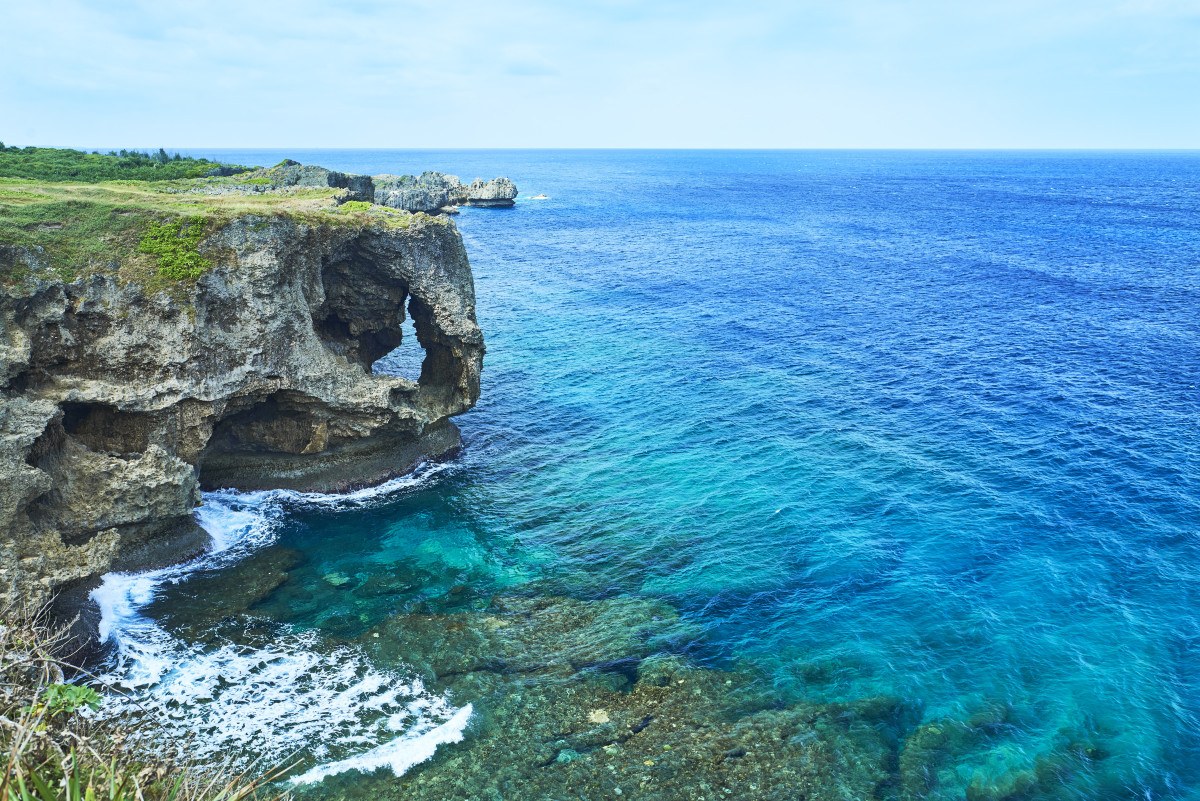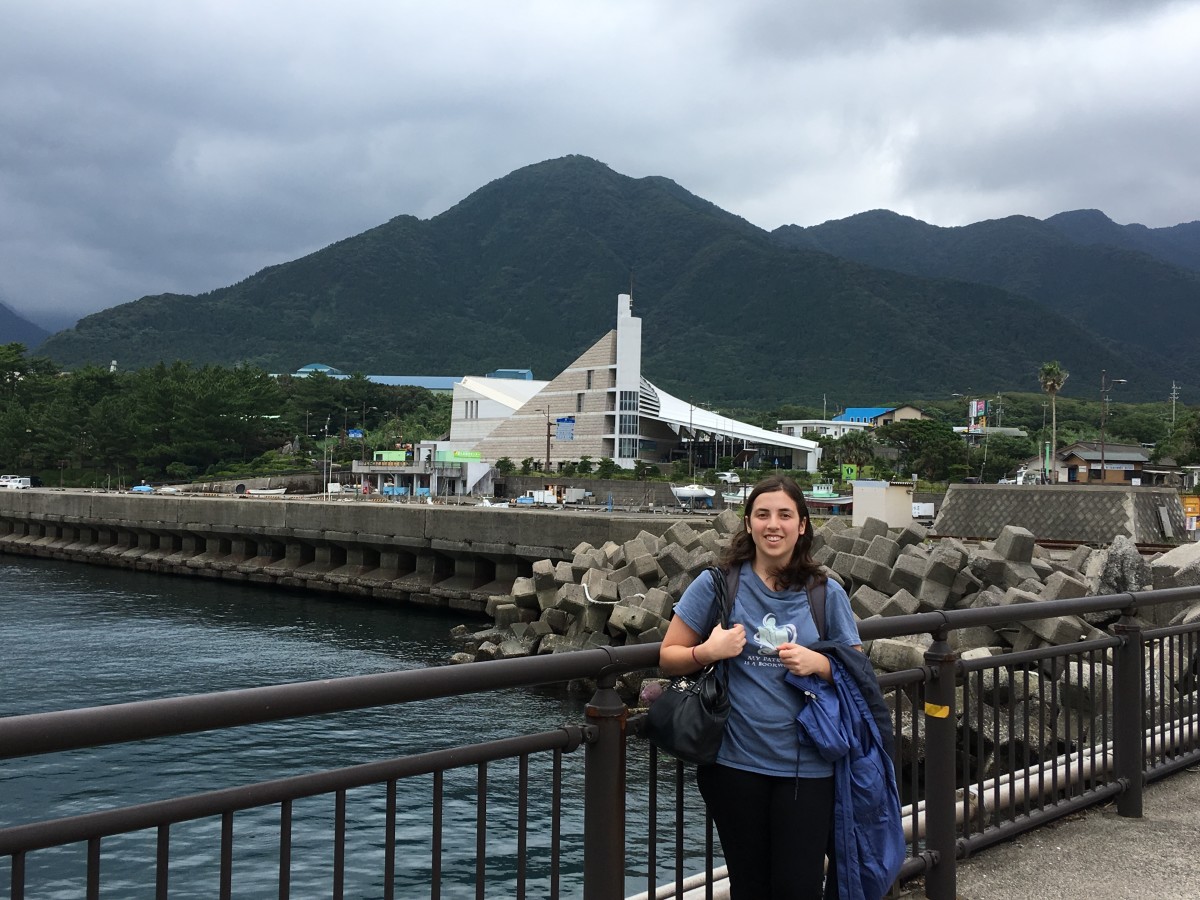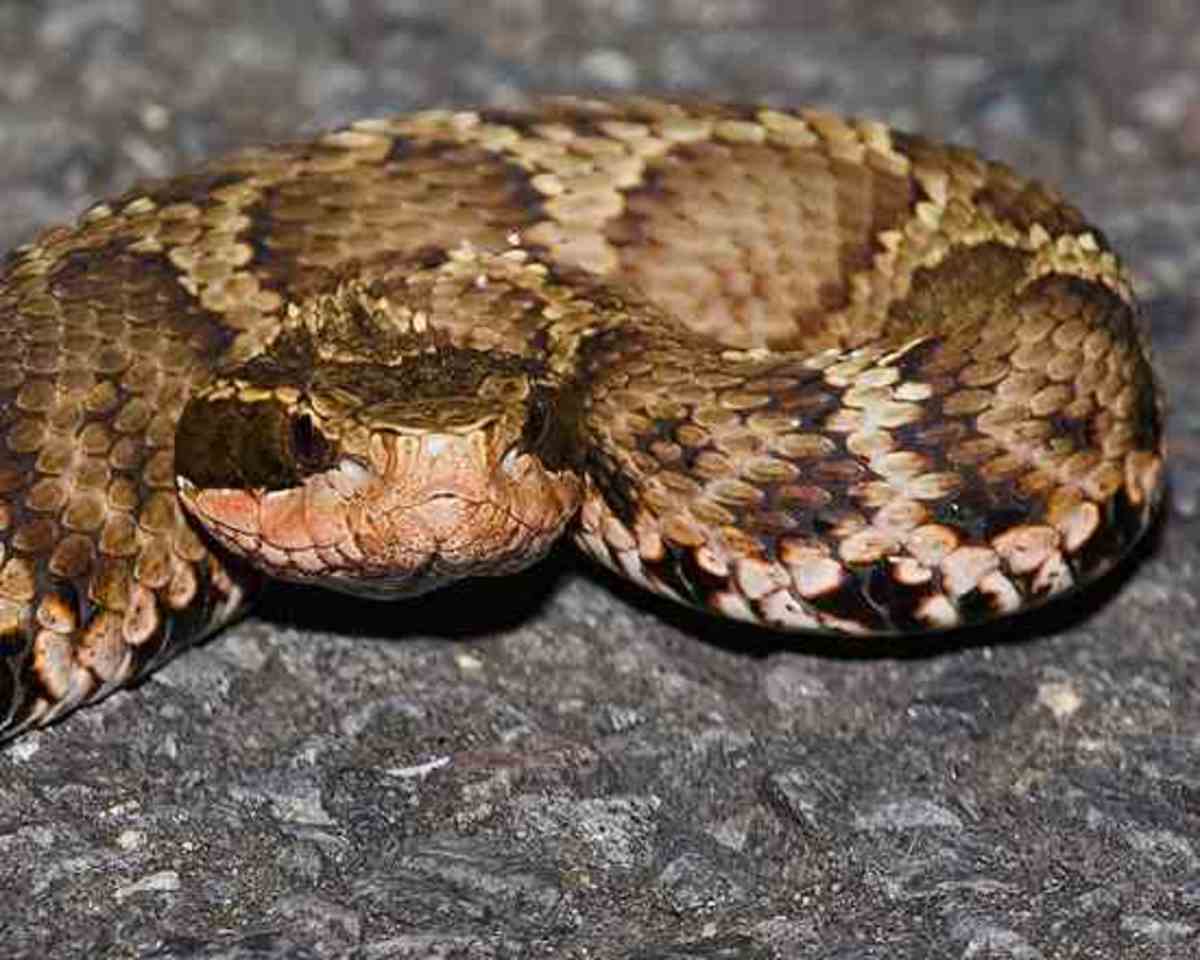- HubPages»
- Travel and Places»
- Visiting Asia»
- Eastern Asia
Tokyo Day Trips - Enoshima
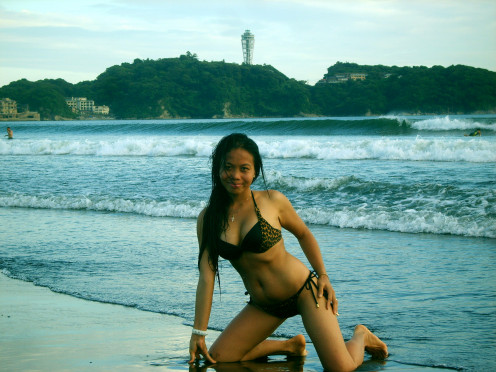
Enoshima
Enoshima (江の島) literally means island of the bay. However, visitors do not need to take a boat to arrive on the island. The island is a protruding rock outcrop just a few hundred meters from the coastline of Sagami Bay. In years past, a sandbar bridge at low tide made it accessible on foot from the town of Katase. Today, the sandbar is still there, but a bridge for cars and a walkway for pedestrians now connect the island to the popular beaches along the Shonan coast. With a circumference of only four kilometers, Enoshima is small enough to hike around at a casual pace in just a few hours. That is why Enoshima is a must-see day trip from Tokyo.
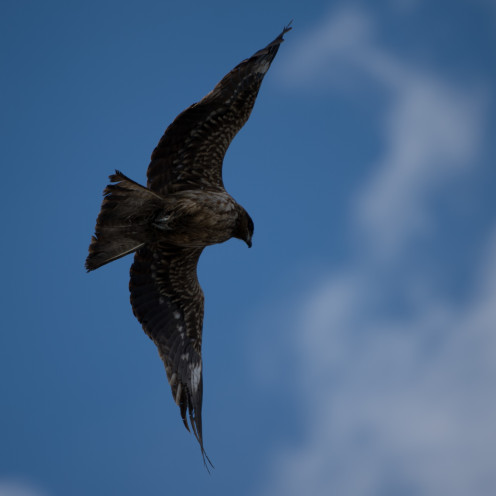
Rich in History and Culture
For as small as it is, Enoshima is rich in history, culture and scenery. There are three shrines with histories dating back to the 13th century. History and culture are also embedded in the island’s culinary heritage since many of the seafood restaurants are family businesses that have been operating for generations. An abundance of flowers and trees blanket the island’s rocky slopes and cliffs throughout the year. In addition to the ubiquitous seasonal flora, Enoshima is home to a variety of bird species, most notably the hawks that soar past the cliffs in the wind or just hover at great heights above the island. The locals call the hawks “tonbi”, a Japanese word for kite.
Mt. Fuji from Enoshima in Ukiyoe Art
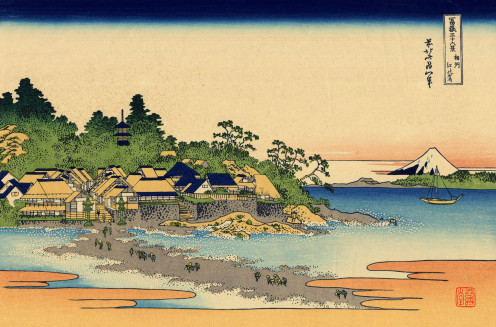
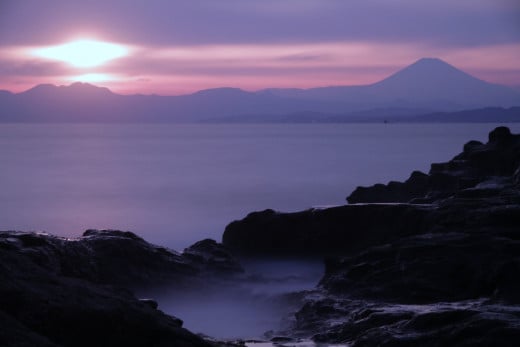
Spectacular Views
In addition to the natural beauty on the island, visitors can appreciate amazing views from various vantage points around Enoshima. The island hosts spectacular views of the Miura and Izu Peninsulas that line the east and west coasts of Sagami Bay. Directly south, Oshima with its volcanic peak, as well as several other Izu Islands are visible on clear days. Still, the most impressive view is the view west. As Enoshima is in the sunset shadows of Mt. Fuji, the twilight views of Japan’s iconic volcano inspire even the most novice of poets to write a Haiku.
The Legend of Benzaiten and the Five-Headed Dragon
According to legend, people in the coastal fishing villages suffered the torments of a five-headed dragon for more than a thousand years. The dragon had a great appetite for eating children; however, it would also cause other calamities for the villagers. Their tribulations included fires, floods, tsunamis, earthquakes and failed harvests that the destructive dragon inflicted upon them. Once aware of the villagers’ suffering, the goddess Benzaiten appeared amidst ominous clouds and earthquakes in the year 552. The goddess shook the earth until a giant rock from the bottom of Sagami bay rose up to the sea’s surface. She descended on the island to make the new island her home.
The dragon fell in love with the goddess and proposed to her. Benzaiten, a persuasively eloquent goddess, rejected the dragon's proposal and scolded the dragon for doing wrong by wreaking havoc on the villagers. She proclaimed that the welfare of the people was paramount and that she could never accept a proposal from such a villain. Ashamed, the dragon complied and repentantly ceased its destructive behavior.
Some versions of the legend claim the goddess wed the dragon after it promised to ensure the safety and happiness of the villagers. Then after the dragon’s death, its body was turned into the hill still known as “Dragon Mouth Hill” (龍ノ口). Interestingly enough, the hill was an execution ground in the middle ages.
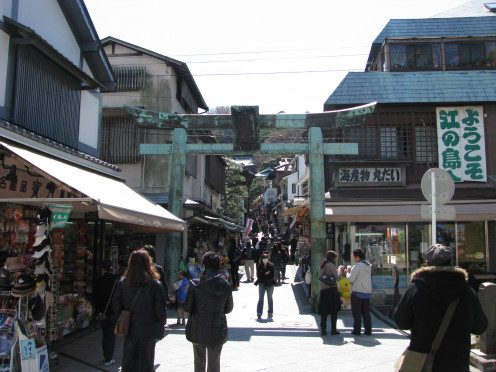
Shirasudon
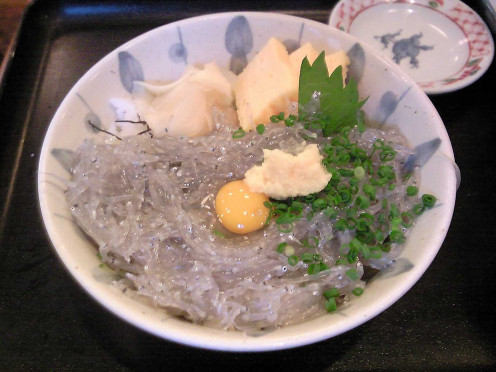
Arriving on Enoshima
After walking across the 600-meter bridge, visitors funnel into a narrow uphill street. Hawkers from the local seafood restaurants at the entrance to the street shout, “Irasshaimase (いらっしゃいませ)” which loosely translates into, “you are welcome at this establishment”. It is worth having a look at some of the aquatic delicacies that they have on display. For a tourist unfamiliar with Asian fish markets, the restaurant menus may seem rather peculiar; however, peculiar can sometimes be adventurous. Local dishes include sea cucumbers, octopus, squid, a variety of shellfish and fish all prepared in Japanese style. One popular dish is Shirasudon. Shirasu are very small young, white fish caught around Enoshima and served at local restaurants. They are served both raw or cooked over white rice with salmon roe or sashimi.
In addition to walking up the main narrow road, there are two other choices for exploring the island. Going left will take you along the northeast side of the island. The road goes through a quiet neighborhood and then past the Enoshima Yacht Harbor before ending at the marina's cement tetras. There are great views of Koshigoe, Kamakura and Hayama. On a windy day, the bay is filled with windsurfers and small sailboats. The other choice is to go right and walk along the rocky shore. This is fine at low tide on a calm day, but could be challenging and even dangerous if there are waves.
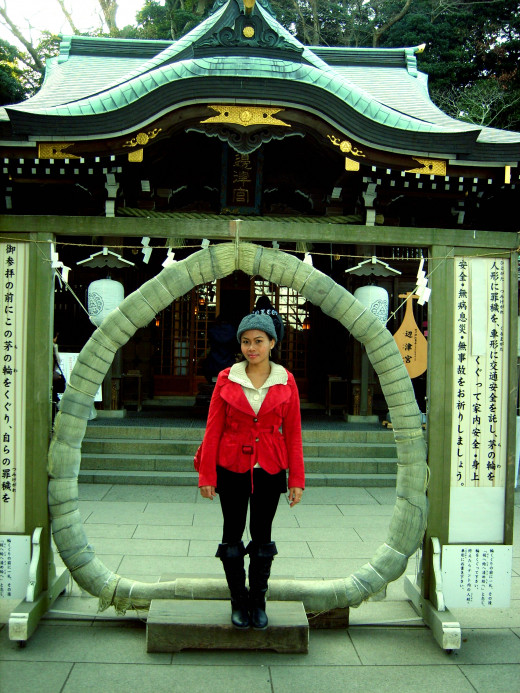
Enoshima Shrine
Enoshima Jinja is the name that collectively refers to three separate shrines on the island. The three shrines are Hetsunomiya, Nakatsunomiya and Okutsunomiya. According to island lore, the shrines originate from a shine built in Iwaya Cave in 552.
Hetsunomiya, established in 1206, is at the top of the narrow shopping street. The shrine was reconstructed in 1675 and renovated in 1976. The shrine houses a naked statue of Benzaiten. Just a few minutes walking from there is the red building of Nakatsunomiya founded in 853. And about ten minutes farther is Okutsunomiya reconstructed in 1842.
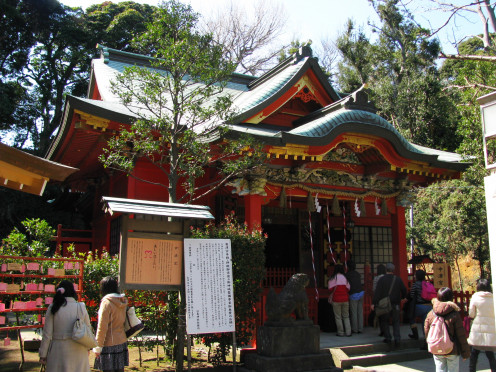
Enoshima in Summer
Enoshima Yacht Harbor
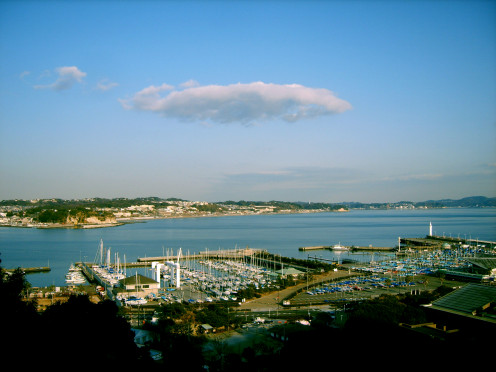
Other Places to See on Enoshima
Samuel Cocking Garden – Open from 9 am to 5 pm in winter; to 8 pm in summer (200 yen admission for the botanical garden and 500 yen for the garden plus the observation tower). Flora in the garden change with the seasons, but there are always some flowers in bloom. The garden is on the former residence site of British trader, Samuel Cocking. It is a perfect place for a romantic stroll in any season. Since the botanical garden is atop the island, it is an excellent vantage point for panoramic views of the area.
Southern Coast -- To get to this part of the island, you should turn right at the top of the narrow shopping street and follow the road along the west coast. The road eventually turns into walkways and meanders up and down around to the jagged cliffs on the island’s southern coastline. The steep cliffs have been battered and shaped by typhoons, wind and waves over eons of years. Although the area is off-limits when weather is dodgy, it could be a marine biologists dream on a nice day. The tidal pools are full of aquatic life, but take care while examining the tidal pools. Large waves often roll in from the south and they can most unexpectedly shower the unaware visitor.
Iwaya Caves – Open from 9 am to 5 pm in summer and to 4 pm in winter, admission is 500 yen. These caves are next to the tidal pools. They are somewhat touristy, but worth visiting at least once. The first cave has a variety of Buddhist statues. The second cave has been dedicated to the legendary dragon that used to terrorize the area.
Enoshima Island Spa – The spa is open is open to the public from 10 am until 9 pm and costs close to 3000 yen. As with many Japanese onsens, this spa enforces a “no tattoo” policy. Enospa is both a resort and day spa on the rocky shore of Enoshima. There are hot spring baths as well as indoor and outdoor pools. Some of the pools host views of Mt. Fuji on days with good visibility.
Enoshima Bentenmaru – This is a passenger boat that takes tourist from the southern coast to the entrance of the island. Hours of operation depend on sea conditions and time of year.
Enoshima in Japanese History
-
4000 B.C. – Waves and wind erode the island’s coast and begin forming the Iwaya Caves on the southern face.
-
552 C.E. – Enoshima Shine (actually three small shrines) are established. Each of the three shrines is dedicated to a Shinto sea goddess (the goddess Tagitsu, the goddess Ichikishima and the goddess Tagiri).
-
1275 – Kublai Khan’s ambassador and a group of messengers arrive in Japan with a message from Kublai Khan demanding Japan’s surrender. Hojo Tokimune rejects the offer and all five messengers are executed at the Tatsunokuchi ground (Mouth of the Dragon). Their heads are displayed on bamboo stakes on the Enoshima Beach as a warning.
A Concise History of Japan
-
Late Edo Period – Hoitsu Sakai paints a turtle on the ceiling of Enoshima Shrine.
-
During a sojourn in 1600, Tokugawa Ieyasu (1542 -1616), the founder and first Shogun of the Tokugawa Shogunate, establishes an official prayer hall for the Tokugawa family on Enoshima.
-
In July and August of 1877, American zoologist Edward S. Morse spent a month on Enoshima collecting specimens.
-
In 1880, after the Shinto and Buddhism separation order of the new Meiji government had made the land on Enoshima available for private ownership, Samuel Cocking bought a large portion land on the island’s summit. The British merchant purchased the land in his Japanese wife's name. He developed a power plant and extensive botanical gardens including a very large greenhouse.
-
In 1885, the first seaside resort opened near Enoshima. As resort villas were built, Enoshima became an exclusive vacation destination for artists and wealthy Tokyoites.
-
The Great Kanto Earthquake of 1923 destroys a number of structures on Enoshima. Among them is the Samuel Cocking Greenhouse. Although the original greenhouse was destroyed, the botanical garden (now the Samuel Cocking Garden) remains an attraction with over half a million visitors a year.






